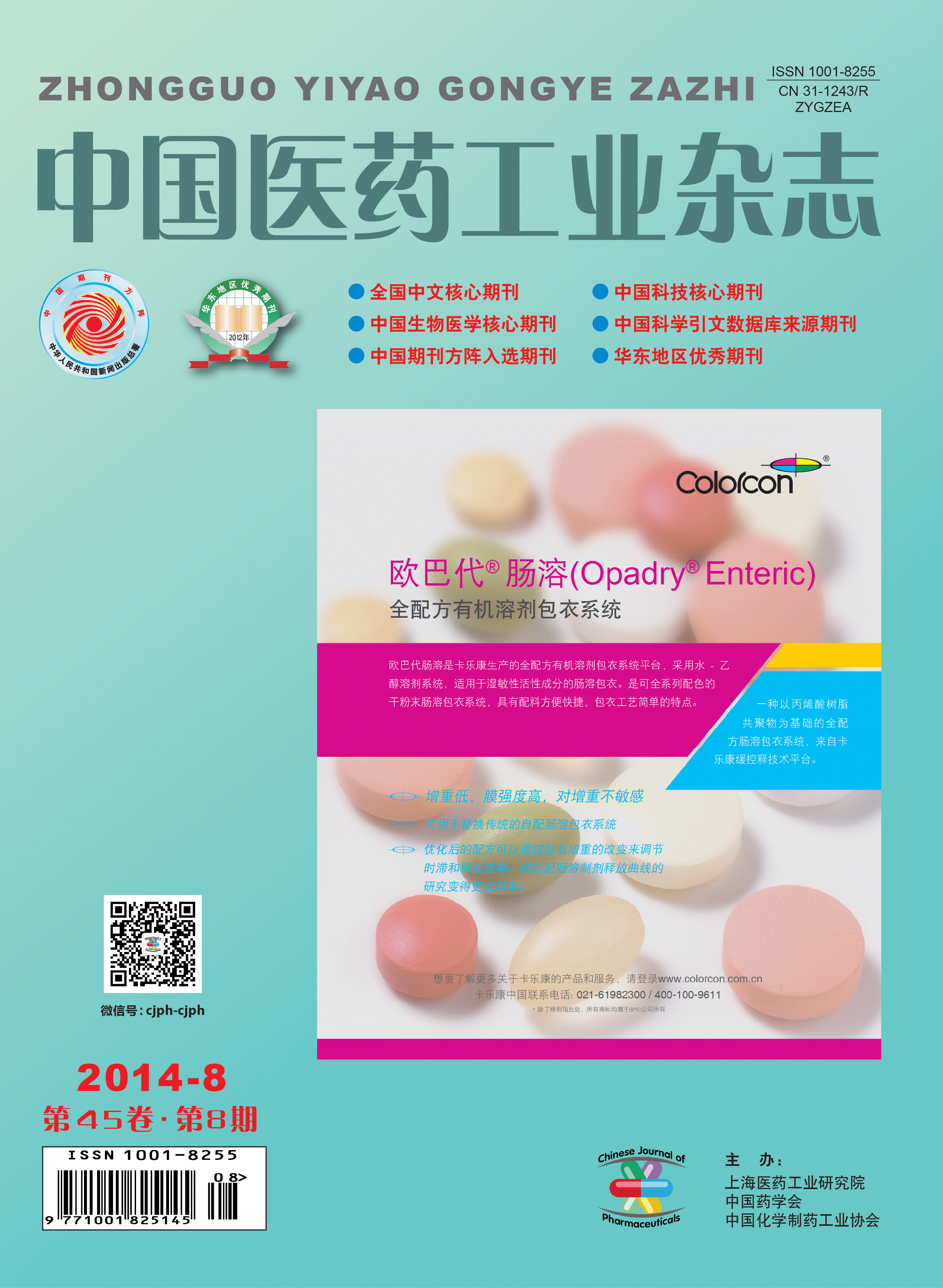CHEN Wenrong1, LONG Xiaoying1, CHEN Bao2*, LIN Wanting1, WANG Yifan1
2014, 45(8): 744-749.
The effects of process influence factors (shearing speed, adding speed of ethanol solution and homogeneous times) and formulation influence factors (the types of phospholipids, amounts of surfactants, electrolyte and drug) on the quality of vitamin A palmitate (1) transfersomes were investigated with particle size and ζ potential as the indexes by single factor tests. The preliminary stability of the product was also tested. The optimal preparation was as follows: dissolving phospholipids (1 g), Tween-80 (0.2 g) and 1 (0.2 g) into 0.5 ml of ethanol as oil phase, dissolving phenoxyethanol (0.5 g) into 100 ml of water as water phase, dropping the oil phase with 2 ml/min into the water phase kept the shearing speed of 13 000 r/min to obtain the primary transfersomes, then high pressure homogenization under the pressure of 1 500 bar for one times to obtain the final product. The particle size, ζ potential and entrapment efficiency of the optimized product were (100.8±16.5)nm,(-43.7±1.1)mV and (96.2±1.2)%, respectively. However, when the product was stored at 4 ℃ for 6 months, the particle size and drug content were decreased while the absolute value of ζ potential was increased.
